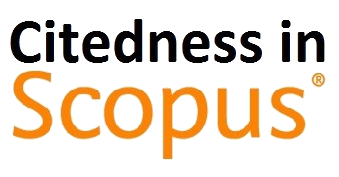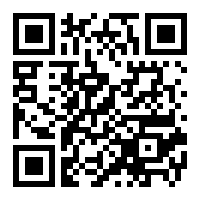Designing The Concepts of “The Maturity Level of Netizen”: How To Manage Comment & Critics Profiling 1.0
(1) Universitas Dian Nuswantoro
(2) Universitas Dian Nuswantoro
(3) Universitas Dian Nuswantoro
(*) Corresponding Author
Abstract
Full Text:
PdfReferences
N. Jati Suwito and Z. Zamzani, “The Importance of Digital Literacy in Social Media for Indonesian Netizen,” in Proceedings of the 1st Seminar and Workshop on Research Design, for Education, Social Science, Arts, and Humanities, SEWORD FRESH 2019, April 27 2019, Surakarta, Central Java, Indonesia, 2019, pp. 10–14. DOI: 10.4108/eai.27-4-2019.2286876.
H. Delerue, A. M. Kaplan, and M. Haenlein, “Social media: Back to the roots and back to the future,” J. Syst. Inf. Technol., vol. 14, no. 2, pp. 101–104, 2012, DOI: 10.1108/13287261211232126.
M. Lloyd, C. Skyring, and D. Fraser, “Online Personas: Who We Become When We Learn with Others Online,” J. Soc. Media Soc., vol. 6, no. 2, pp. 152–183, 2017, [Online]. Available: https://www.thejsms.org/index.php/TSMRI/article/view/275
S. Beheshti-Kashi and B. Makki, “Social Media News: Motivation, Purpose and Usage,” Int. J. Comput. Sci. Inf. Technol., vol. 5, no. 2, pp. 97–105, 2013, doi: 10.5121/ijcsit.2013.5209.
S. J. Woodruff, S. Santarossa, and J. Lacasse, "Posting #selfie on Instagram: What Are People Talking About?," J. Soc. Media Soc. Spring, vol. 7, no. 1, pp. 4–14, 2018, [Online]. Available: https://thejsms.org/index.php/TSMRI/article/view/269
P. Willmot, J. S. Logan, and A. R. Crawford, “Establishing an innovative new learning environment to foster industry links in higher education,” Int. J. Comput. Appl. Technol. Res., vol. 5, no. 2, pp. 71–75, 2016.
S. L. Wilson, “Detecting Mass Protest through Social Media,” J. Soc. Media Soc., vol. 6, no. 2, pp. 5–25, 2017, [Online]. Available: http://www.thejsms.org/index.php/TSMRI/article/view/239/123
D. Murthy and A. J. Gross, “Social media processes in disasters: Implications of emergent technology use.,” Soc. Sci. Res., vol. 63, pp. 356–370, Mar. 2017, DOI: 10.1016/j.ssresearch.2016.09.015.
I. Gamayanto and F. Esti Nilawati, “Pengembangan dan Implementasi dari Wise Netizen (E- Comment) di Indonesia,” Techno.COM, vol. 16, no. 1, pp. 80–95, 2017.
K. Bala, “Social Media and Changing Communication Patterns,” Glob. Media J. Indian Ed., vol. 5, no. 1, pp. 1–6, 2014, [Online]. Available: http://proxy.lib.csus.edu/login?url=http://search.ebscohost.com/login.aspx?direct=true&db=ufh&AN=98477971
C. Ferreira, “Social media performance of user-generated content and its relationship with conspicuous consumption: through the lens of the expectation confirmation theory,” 2016.
M. H. & S. H. Toni Ahlqvist, Asta Bäck, “Social Media Roadmaps Exploring the futures triggered by social media,” 2008.
T. A. T. Izhar, “A Framework-based Mapping and Filtering for Social Media,” J. Soc. Media Soc., vol. 7, no. 1, pp. 295–312, 2018, [Online]. Available: http://www.thejsms.org/index.php/TSMRI/article/view/175/178
M. Saldana-Perez, C. Cavalière, M. Torres-Ruiz, and M. Moreno-Ibarra, “When Twitter Becomes a Data Source for Geospatial Analysis,” Res. Comput. Sci., vol. 148, no. 10, pp. 357–374, 2019, DOI: 10.13053/RCS-148-10-30.
B. S. Y. Gupta, “Johari window approach in mentoring management students- an empirical study of up and uttarakhand (India)," Sch. Res. J. Interdiscip. Stud., vol. 4, no. 35, pp. 6410–6420, 2017.
A. Noland, “Social Media Activists: Analyzing the Relationship between Online Activism and Offline Attitudes and Behaviors,” J. Soc. Media Soc., vol. 6, no. 2, pp. 26–55, 2017, [Online]. Available: https://thejsms.org/index.php/TSMRI/article/view/261
A. Al-Rawi, "Audience Preferences of News Stories on Social Media," J. Soc. Media Soc., vol. 6, no. 2, pp. 343–367, 2017.
I. Gamayanto, H. Christian, S. Wibowo, D. R. I. M. Setiadi, and D. Purnamasari, “Developing ‘ Leadership Intelligence ( CI2 ) Framework ’ Inside Social Media to Develop an Ethical Leader using the Johari Window Method,” Indones. J. Inf. Syst., vol. 1, no. 2, pp. 119–132, 2019.
B. K. Chicotsky and F. Qiao, “Laughing and Yelling Through Yaks: A Content Analysis of Yik Yak, Exploring Humor Topics, Types, Styles and User Motives in the Anonymous Social Media Environment,” Soc. media Soc., vol. 7, pp. 211–232, 2018.
H. Jalonen, “‘A Good Bell is Heard from Far, a Bad One Still Further’: A Socio-demography of Disclosing Negative Emotions in Social Media,” J. Soc. Media Soc., vol. 6, no. 1, pp. 69–109, 2017.
A. Öqvist and P. Högström, "Don't ask me why: Preschool teachers' knowledge in technology as a determinant of leadership behaviour," J. Technol. Educ., vol. 29, no. 2, pp. 4–19, 2018, DOI: 10.21061/jte.v29i2.a.1.
I. Gamayanto, S. Wibowo, D. R. Ignatius, and M. Setiadi, “Developing ' anti-cyberbullying intelligence ' inside social media using Johari window-ken Watanabe-problem solving 101," J. Art, Des. Educ. Cult. Stud., vol. 5, no. 2, 2020.
T. Safaria, "Prevalence and impact of cyberbullying in a sample of Indonesian junior high school students," Turkish Online J. Educ. Technol., vol. 15, no. 1, pp. 82–91, 2016.
S. R. Bartholomew, E. Reeve, R. Veon, W. Goodridge, V. Lee, and L. Nadelson, “Relationships between access to mobile devices, student self-directed learning, and achievement,” J. Technol. Educ., vol. 29, no. 1, pp. 2–24, 2017, DOI: 10.21061/jte.v29i1.a.1.
J. Wheadon, G. A. Wright, R. E. West, and P. Skaggs, “The need, development, and validation of the innovation test instrument,” J. Technol. Educ., vol. 29, no. 1, pp. 112–135, 2017, DOI: 10.21061/jte.v29i1.a.6.
DOI: https://doi.org/10.30645/ijistech.v6i3.255
Refbacks
- There are currently no refbacks.
Jumlah Kunjungan:
Published Papers Indexed/Abstracted By:












